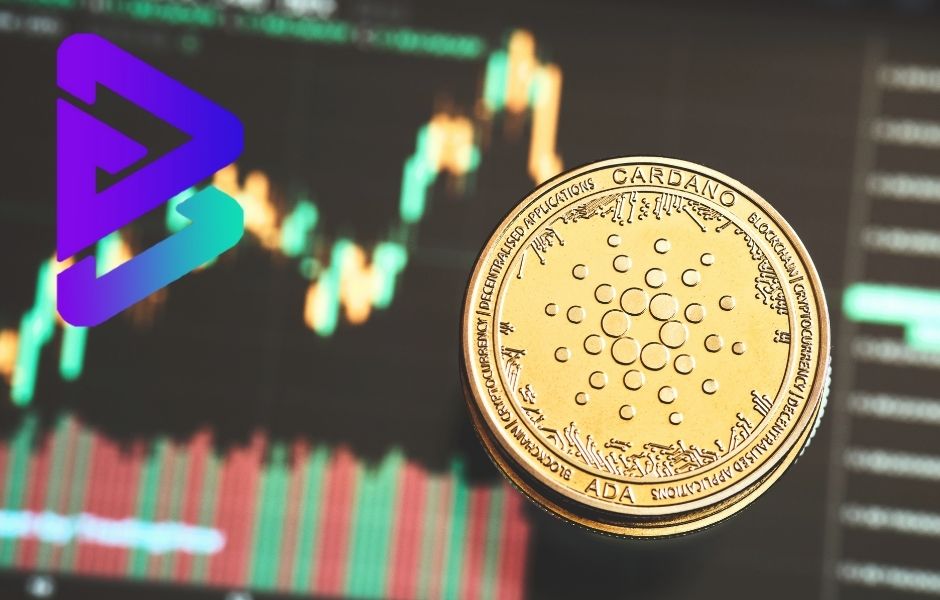Importance of Total Value Locked (TVL) In DeFi protocol
The crypto industry’s constant improvements have brought numerous unheard-of advantages and difficulties. Cryptocurrencies promised to revolutionize established financial infrastructures, methods, and procedures. In the modern financial markets, cryptocurrencies have risen to the top of value-based charts thanks to the advantages of decentralization, cryptography, and transparency.
What does “total value locked” mean in the new era of decentralized finance? At this point, the emergence of NFTs, DeFi, and other decentralized solutions would come up in talks about total value locked in DeFi. The importance of total value locked, how to calculate it, and further details are covered in the following piece.
Total value Locked: What is it?
The definition of Total Value Locked, or TVL, in the context of DeFi, should be the primary point of emphasis in any discussion of the topic. In essence, TVL represents the entire value of the assets staked in a DeFi platform’s smart contracts. It serves as a gauge for the money available on various DeFi platforms for use in transactions, borrowing, and lending. A DeFi app’s TVL provides a positive indication of how well it performs in attracting interest from monthly active users for various transactions. By calculating the total value locked in all DeFi apps, you may calculate the TVL for the DeFi sector.
Regarding the overall value locked in DeFi, you must also be confused, especially in light of market capitalization. It is crucial to remember that TVL is a particular indicator used specifically for DeFi projects. The TVL value in DeFi varies from platform to the next, which is the most crucial factor. On the other hand, market capitalization is a sign of market value for any blockchain-based forum that issues its tokens.
The potential of TVL to directly influence the usability and returns from DeFi apps for end-users makes the significance of TVL in DeFi reasonably evident. It is also a crucial KPI for DeFi systems connected to lending and swapping simultaneously. Why? DeFi applications typically aim for a higher TVL value to attract more users. How? Higher TVL indicates the DeFi platform’s capacity for effective swaps as well as the necessary supply of liquidity in loan markets.
TVL’s importance for DeFi
The development of the overall DeFi ecosystem is fundamentally highlighted by the significance of TVL in DeFi. DeFi platforms require funding in the form of liquidity or trading pool collateral. The total value locked in a particular DeFi platform is a gauge for both the protocol’s asset worth and user attraction.
An evident sign of practical usefulness for traders and investors is a higher TVL. The rise in TVL for a specific DeFi protocol results in better platform usability, liquidity, and popularity. Due to all of these considerations, the DeFi project may have realistic possibilities of success.
A DeFi protocol with a higher TVL has more money tied up in the platform. Users could profit from various advantages and higher returns as a result. A smaller TVL, on the other hand, is indicative of a shortage of cash, which ultimately translates to poorer yields for customers. In the end, the response to the question “How important is TVL?” summarises how it is superior to market capitalization assessment.
You must first understand how the total value locked for a DeFi platform functions as a reliable gauge of its performance. Calculating the number of monthly active users is a valuable and straightforward indicator for assessing how well-liked a project is. Therefore, you cannot discount the importance of total value locked in DeFi for determining a project’s robustness.
TVL and market capitalization are different.
You may be curious about market capitalization to measure a project’s success. However, a DeFi protocol’s market capitalization essentially demonstrates active and passive investors’ support for a protocol. On the other hand, the total amount locked acts as a crystal-clear sign of how well a protocol performs in the DeFi domain.
It’s possible that passive investors won’t use the protocol directly, but they must have invested in it will eventually gain from it. The protocols’ tokens are bought by passive investors expecting a rise in token value, which helps the market capitalization increase. Total value locked, or TVL, shows investors the platform’s actual usage.
Can the market valuation of DeFi initiatives be disregarded as a measure of their worth? Market capitalization gives a sense of a particular DeFi protocol’s possibilities in the future. Total value locked in a decentralized finance project, on the other hand, demonstrates how the protocol is doing right now.
Where Can I Find a DeFi Protocol’s Total Value Locked?
The systems run by analytics companies like DeFi Pulse and DeFi Llama can assist you in locating the TVL for a specific decentralized finance protocol. These platforms offer an in-depth visual representation of the entire value locked in DeFi protocols globally. The DeFi protocols with the most crypto assets staked in the media are identifiable. Interestingly, the two independent analytics firms’ TVL of decentralized finance protocols is tracked in various ways.
Also, read – The Next Hidden Altcoin Gem is THORChain (Rune)
DeFi users should know that DeFi Pulse tracks the DeFi protocol’s intelligent contract transactions on the Ethereum blockchain. The protocol uses the overall balance of ERC-20 tokens and Ether to calculate the TVL value. DeFi Llama, on the other hand, uses a different approach to determine the TVL. To calculate TVL, DeFi Llama uses the total balance of all DeFi chains or each platform separately.
How is Total Value Locked in Decentralized Finance Calculated?
One of the difficulties in evaluating TVL in DeFi protocols is the emergence of new DeFi protocols. Aspiring users have a hard time estimating the precise amount of market value that has been locked. Finding the current DeFi protocol that is safe to use can be challenging as well. Users might start by searching for the well-known protocols with a TVL of close to $1 billion.
Higher TVL clearly indicates the significant demand for the DeFi protocol, along with signs that the protocol has support from a strong developer team and offers valuable use cases. However, DeFi projects with lower TVL must be closely examined if they give higher yields. For instance, promotional frauds may be used by new DeFi systems to obtain customers and market share.
The significance of TVL in DeFi indicates the urgent need to develop a TVL estimate for DeFi projects. To determine the entire value locked for a decentralized financial system, though, is also crucial. What key elements go into deciding the TVL for a decentralized finance protocol?
The current cost of the DeFi protocol
TVL determination in DeFi protocols does not require arduous procedures. The first step in the process is calculating the DeFi project’s market capitalization by multiplying its supply by the current price. The next step in determining the TVL is to divide the market capitalization by the protocol’s maximum circulating supply. A clear understanding of the TVL ratio can be obtained by dividing the total market capitalization of a locked asset by the TVL estimate.
A key indicator of whether a given DeFi asset is overvalued or undervalued is the TVL ratio. You need to comprehend the importance of the TVL ratio if you are still unsure how significant TVL is. For instance, the asset is undervalued and better suited to investors if the ratio is less than 1. Conversely, a purchase may be overpriced if the market cap exceeds the TVL estimate.
Most elevated TVL in the DeFi landscape
Total value locked is unique to the DeFi landscape; thus, finding the project with the highest TVL is crucial. The overall value locked in DeFi platforms was around the start of 2020, close to $630 million. Interestingly, one of the first protocols to dominate the charts for DeFi TVL estimates was MakerDAO.
New protocols like Aave and Curve have eclipsed the market’s prior leaders. For instance, MakerDAO has a TVL of $11.5 billion, whereas Curve’s TVL is approximately $17 billion. Lido and Anchor are two other well-liked DeFi protocols with a high TVL estimate. While Anchor’s TVL is estimated at $12.6 billion, Lido’s is at $15.4 billion.
Conclusion
You should be aware that new protocols and products are continuously being introduced, which is how the DeFi environment is continually changing. Based on their valuable use cases, the leaders of yesterday cleared the way for new competitors in terms of TVL. In terms of DeFi TVL, the biggest network and the driving force behind DeFi applications is the Ethereum network.
The function that TVL plays in demonstrating the immediate possibilities of a DeFi protocol makes the significance of TVL in DeFi obvious. It sets the way for simpler DeFi adoption and instructs investors on the true worth of new or existing DeFi protocols. Therefore, it turns out to be a more accurate predictor than the market capitalization of a particular DeFi project. Find out more about TVL and its functions within the larger decentralized finance environment.
Stay informed with daily updates from Blockchain Magazine on Google News. Click here to follow us and mark as favorite: [Blockchain Magazine on Google News].
Get Blockchain Insights In Inbox
Stay ahead of the curve with expert analysis and market updates.
latest from tech
Disclaimer: Any post shared by a third-party agency are sponsored and Blockchain Magazine has no views on any such posts. The views and opinions expressed in this post are those of the clients and do not necessarily reflect the official policy or position of Blockchain Magazine. The information provided in this post is for informational purposes only and should not be considered as financial, investment, or professional advice. Blockchain Magazine does not endorse or promote any specific products, services, or companies mentioned in this posts. Readers are encouraged to conduct their own research and consult with a qualified professional before making any financial decisions. The featured image used is just a creative depiction of the title and it does not intend to hurt sentiments of any person or institution. If it hurts anyone sentiments, please do not hesitate to reach out to Blockchain Magazine.

 Bitcoin
Bitcoin  Ethereum
Ethereum  XRP
XRP  Tether
Tether  Solana
Solana  USDC
USDC  Dogecoin
Dogecoin  Cardano
Cardano  Lido Staked Ether
Lido Staked Ether  TRON
TRON  Wrapped Bitcoin
Wrapped Bitcoin  Chainlink
Chainlink  Wrapped stETH
Wrapped stETH  Sui
Sui  Avalanche
Avalanche  Stellar
Stellar  Hedera
Hedera  Toncoin
Toncoin  Shiba Inu
Shiba Inu  LEO Token
LEO Token  Hyperliquid
Hyperliquid  Bitget Token
Bitget Token  Litecoin
Litecoin  WETH
WETH  USDS
USDS  Polkadot
Polkadot  Bitcoin Cash
Bitcoin Cash  Ethena USDe
Ethena USDe  MANTRA
MANTRA  Wrapped eETH
Wrapped eETH  Uniswap
Uniswap  Pepe
Pepe  Ondo
Ondo  Monero
Monero  Aave
Aave  WhiteBIT Coin
WhiteBIT Coin  NEAR Protocol
NEAR Protocol  Mantle
Mantle  Official Trump
Official Trump  Aptos
Aptos  Dai
Dai  Internet Computer
Internet Computer  Ethereum Classic
Ethereum Classic  Bittensor
Bittensor  Cronos
Cronos  OKB
OKB  POL (ex-MATIC)
POL (ex-MATIC)  Gate
Gate 




